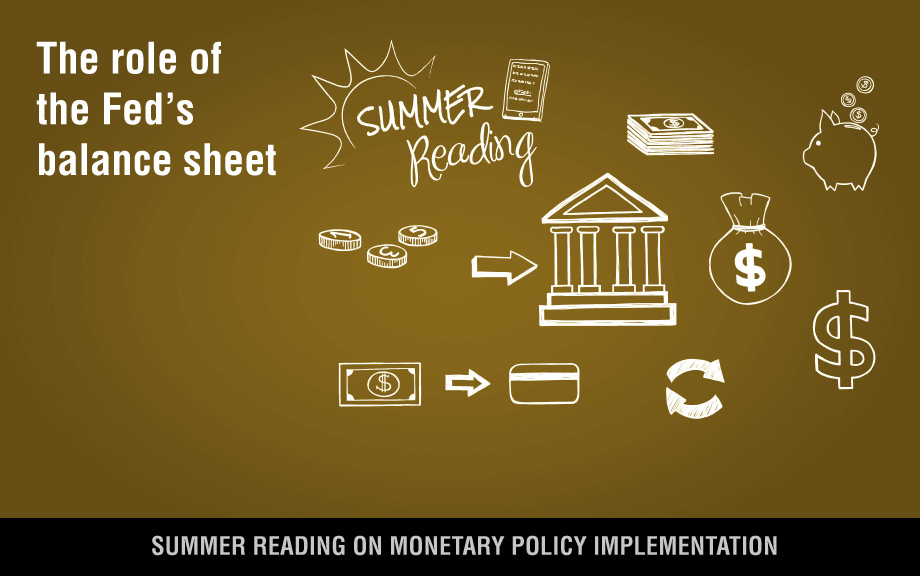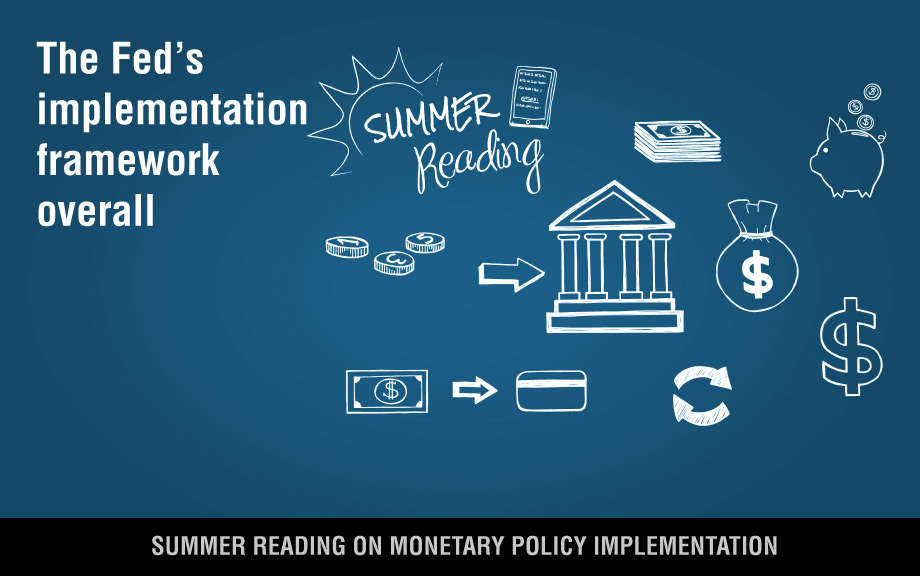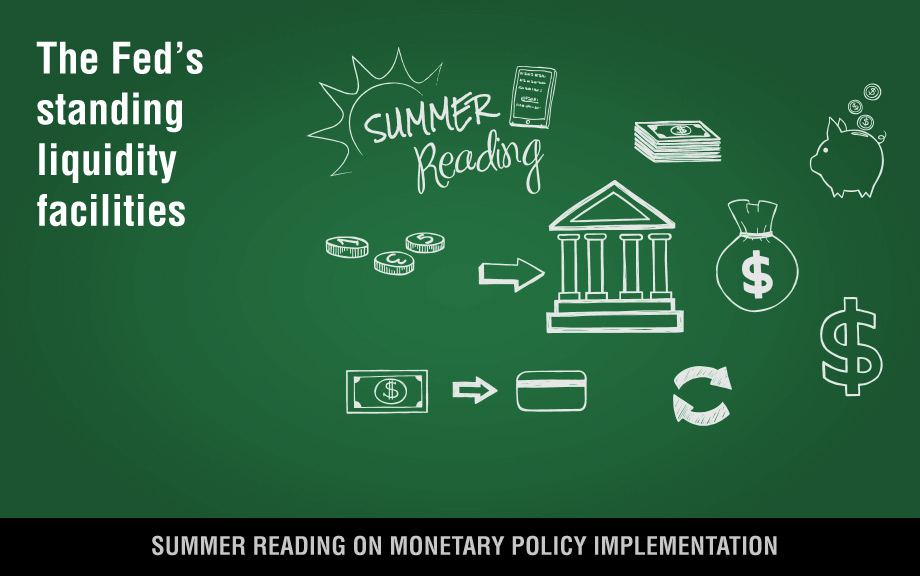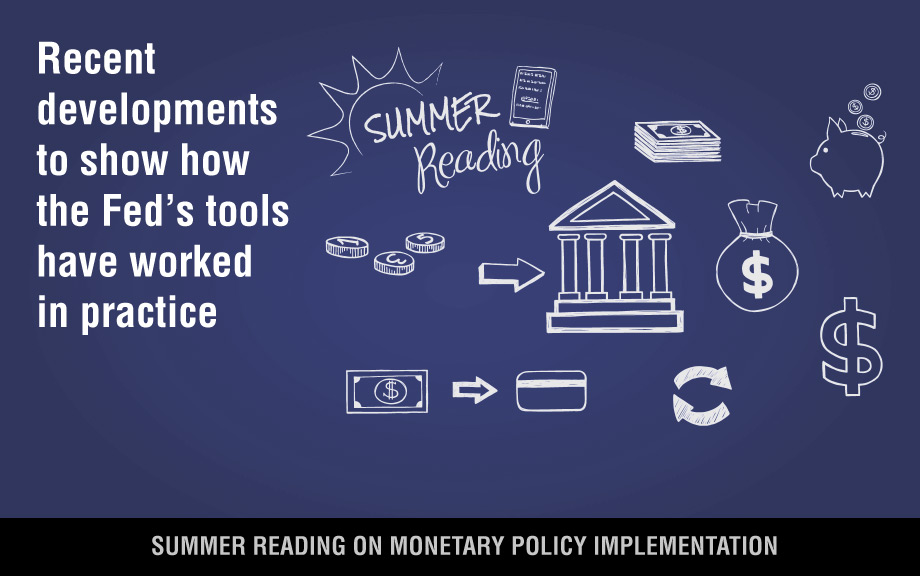
The Fed’s balance sheet, like any financial balance sheet, is a record of the assets acquired—either through open market operations or backstop lending—and the liabilities issued to fund those assets. So, it can be thought of as a record of monetary policy and other actions the Fed took to achieve its “dual mandate” and other responsibilities. In this article, we discuss the evolution and role of the Fed’s balance sheet in monetary policy and its implementation.
The Balance Sheet’s Size
Federal Open Market Committee (FOMC) decisions about the stance and framework for implementing of monetary policy have resulted in significant changes in the Fed’s balance sheet, as seen in the chart below. Before the Global Financial Crisis (GFC) in 2008, the Fed’s balance sheet was smaller both in dollar terms and compared to the size of the economy. At the time, it was mainly comprised of Treasury securities and loans to banks on the asset side, and currency and reserves on the liability side.
Since 2008, there have been prolonged periods when the federal funds target range was set at 0 to 0.25 percent. With rates constrained to this “zero lower bound,” the FOMC used asset purchases to provide additional support to the economy. These asset purchases increased the size of the Fed’s balance sheet and the supply of reserves. Since the GFC, the Fed has controlled the level of short-term interest rates through a “floor system” with administered rates (described in our past article), and in 2019, the FOMC made clear its intention to continue implementing monetary policy this way.
Federal Reserve Assets and Liabilities

The Balance Sheet’s Role in the Economy
The Fed’s liabilities supply safe assets to a range of entities across the financial system. One such liability is currency, which is used in everyday transactions and acts as a store of value. The Fed also supplies reserves to the banking system. Reserves, which are deposits that banks hold at the Fed, are important for banks in settling payments in the financial system, serving as a safe asset to support liquidity risk management, and satisfying regulatory requirements. The U.S. Treasury also maintains a deposit account with the Fed—the Treasury General Account—which is used to manage its cash position, including to make and receive payments related to taxes, spending, and the issuance and repayment of Treasury-issued debt. Deposits at the Fed are also offered to some other institution types, including designated financial market utilities and foreign central banks. Over time, the Fed may accommodate growth in demand for these liabilities by adjusting the size of its balance sheet. Another important liability is the ON RRP facility (described in the previous article), which helps support interest rate control.
The Balance Sheet as a Tool to Influence Financial Conditions
The balance sheet is also a key tool for supporting the FOMC’s monetary policy goals and, on rare occasions, for supporting financial stability. As discussed in the previous article, the Fed sets the stance of monetary policy primarily through adjustments to the federal funds target range. However, the FOMC has previously used asset purchases of Treasury securities and agency mortgage-backed securities (MBS) to help ease financial conditions overall, especially when the federal funds rate was around zero. Such asset purchases put downward pressure on longer-term rates by reducing the stock of privately held debt. The FOMC has also used asset purchases to address market dysfunction. For example, in March 2020 as the COVID-19 pandemic disrupted financial markets, the FOMC directed an increase in the size of the balance sheet to support smooth market functioning in Treasury and agency MBS markets. The FOMC has also at times directed a reduction in the size of the Fed’s balance sheet, to decrease the Fed’s securities holdings to a level consistent with implementing monetary policy efficiently and effectively in its ample reserves regime.
The Fed can also change the composition of its balance sheet in support of monetary policy objectives, while keeping its overall size unchanged. In September 2011, for example, the FOMC directed the sales of shorter-term Treasury securities, while simultaneously using the proceeds to buy securities with longer maturities. This “Maturity Extension Program” used adjustments in the composition of the Fed’s holdings to place downward pressure on longer-term yields.
The Fed’s balance sheet is an important tool for monetary policy implementation. In tomorrow’s article, we’ll discuss another set of tools—standing liquidity facilities—used to help maintain control over short-term interest rates and ensure the stability of the banking and financial system.
Christian Cabanilla is an advisor in the New York Fed’s Markets Group.
Eric LeSueur is an advisor in the New York Fed’s Markets Group.
Josh Younger is an advisor in the New York Fed’s Markets Group.
Also in this series:
The views expressed in this article are those of the contributing authors and do not necessarily reflect the position of the New York Fed or the Federal Reserve System.













